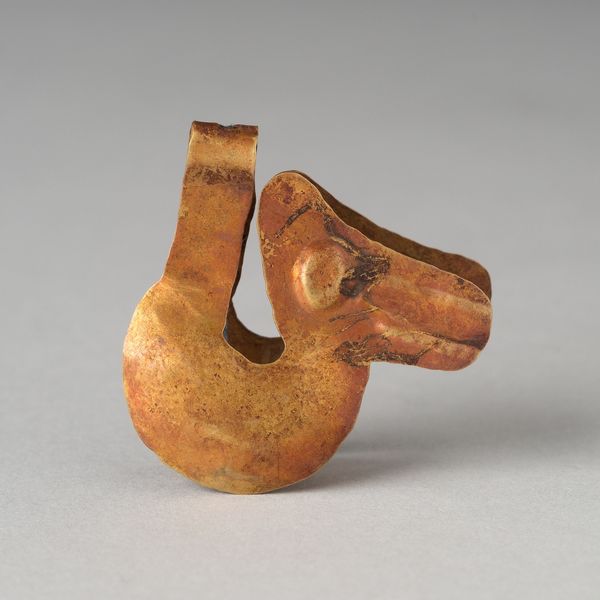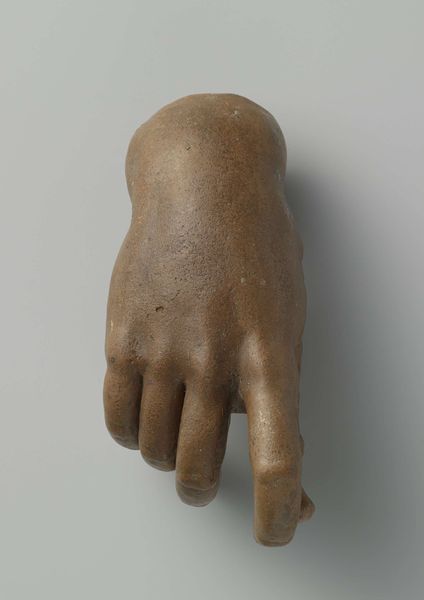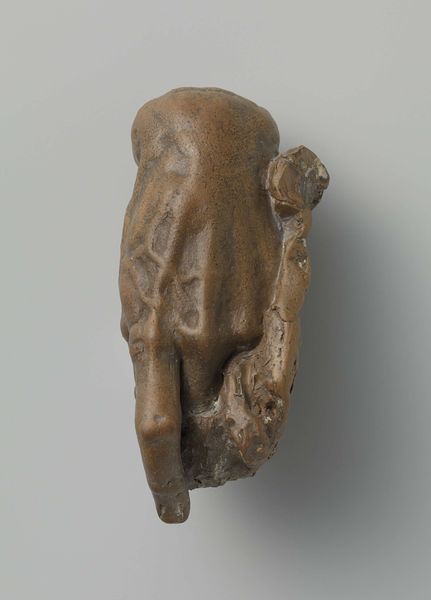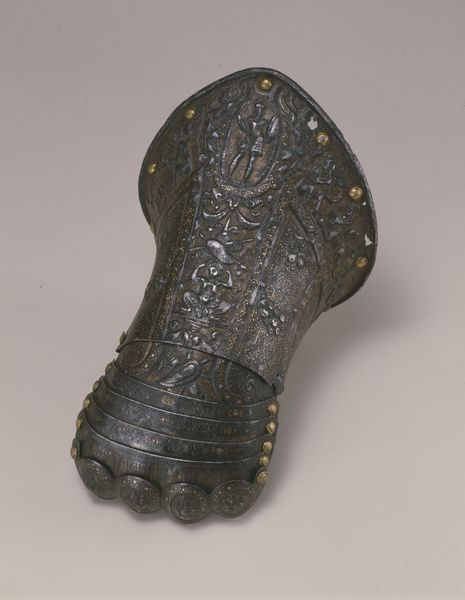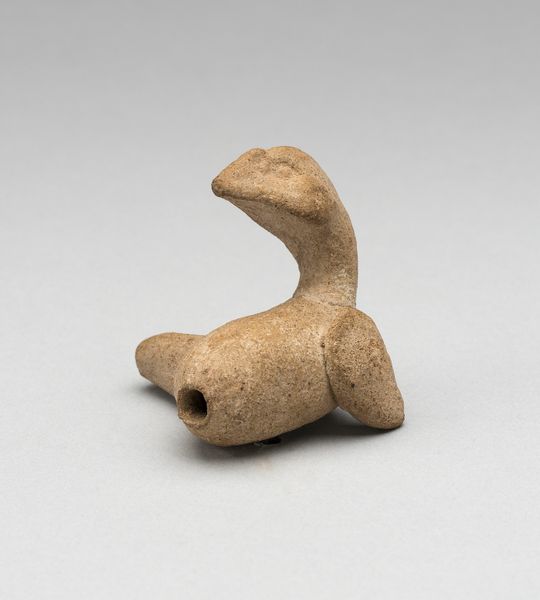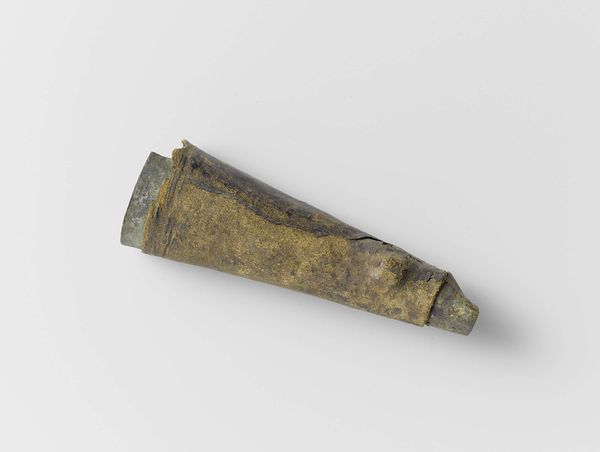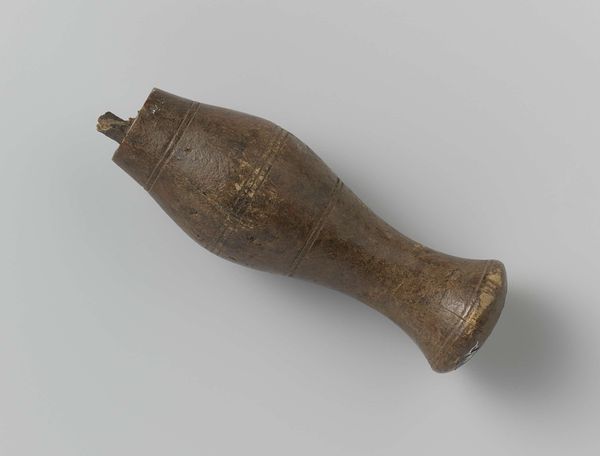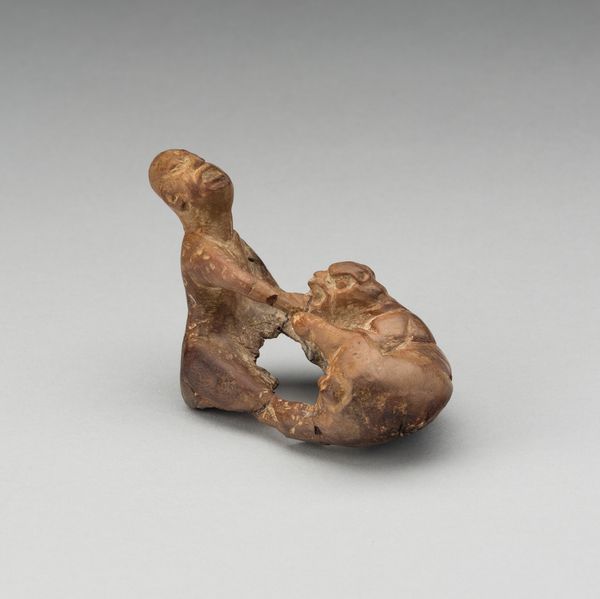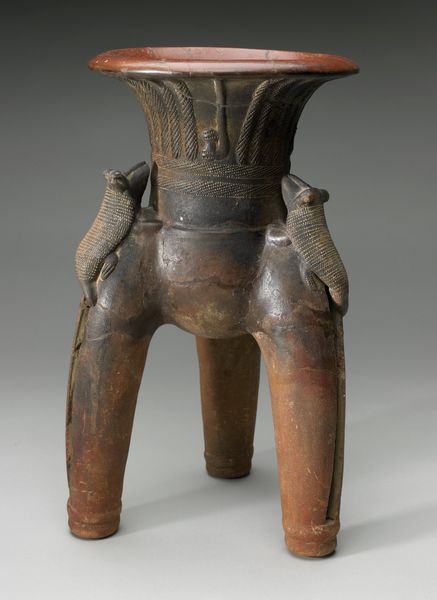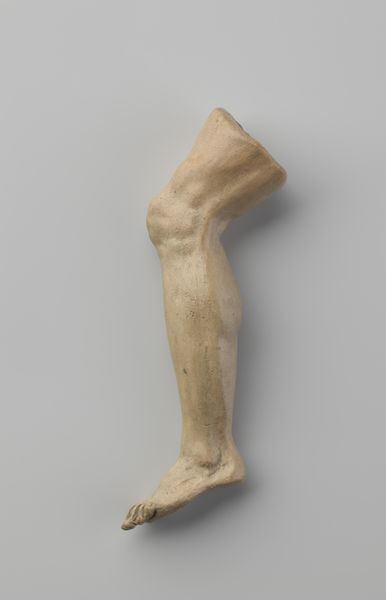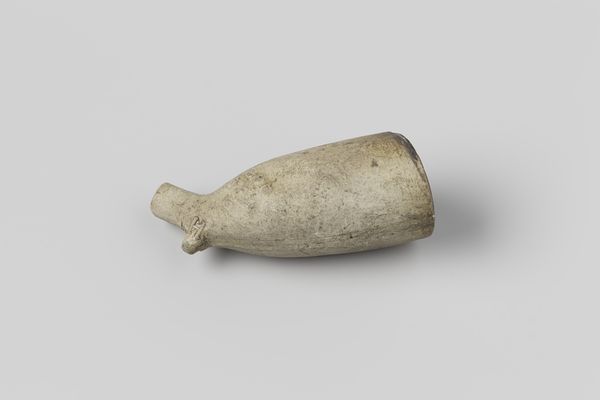
sculpture
#
sculpture
#
mannerism
#
figuration
#
form
#
sculpture
Copyright: Rijks Museum: Open Domain
This foot was made by Johan Gregor van der Schardt in the 16th century, likely in Italy, out of terracotta. Terracotta, meaning "baked earth" in Italian, is a humble material, a low-fired ceramic clay. Yet, the artist has used it to create an object intended for high-minded study. It is a study model, after all. You see the artist’s hand in the subtle modelling of the ankle, the articulation of the toes. The maker's attention to detail shows their intimate understanding of the human form. The choice of terracotta, rather than marble or bronze, emphasizes the value of direct observation and the hands-on process of learning. Here, van der Schardt elevates the status of craft, using it as a means to explore the intricacies of the human body. This challenges the traditional hierarchy between fine art and craft.
Comments
rijksmuseum about 2 years ago
⋮
This group of small models of parts of the body are carefully copied after famous sculptures, in particular by Michelangelo, in Florence and Rome. They came from the workshop of the Nijmegen sculptor Johan Gregor van der Schardt, who had a successful career in Italy, Nuremberg, and Copenhagen. They are extremely rare examples of the, in part autograph, study material of a 16th-century sculptor.
Join the conversation
Join millions of artists and users on Artera today and experience the ultimate creative platform.
